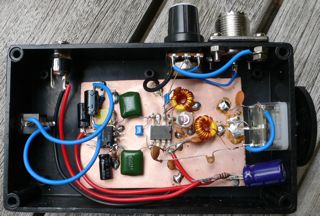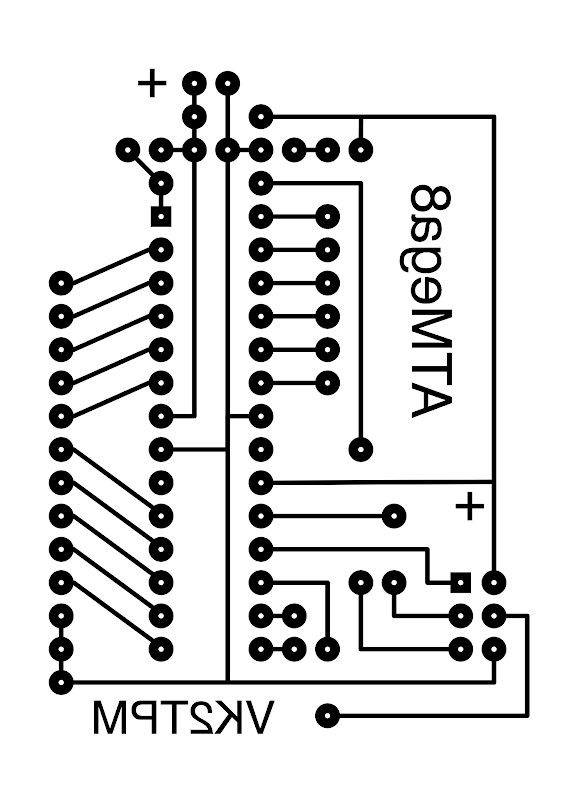 My family lived in Hong Kong for two years and we greatly enjoyed the "Octopus" stored value transport cards very much. Here's how it works: You go down to the station and pay an initial deposit of HK$150 (AU$22) and get an Octopus Card.
My family lived in Hong Kong for two years and we greatly enjoyed the "Octopus" stored value transport cards very much. Here's how it works: You go down to the station and pay an initial deposit of HK$150 (AU$22) and get an Octopus Card.When you enter the MTR (Mass Transit Rail) system you wave the card past a contact-less reader as you go in. When you exit the MTR system you again wave your card and the amount of the fair is calculated and deducted from your balance. The barrier shows you the remaining balance. As needed you top it up either at a machine or one of many shops near the stations. It's quick and easy.
Now, a word about being contact-less. This is key, you can leave the card in your wallet or at the bottom of your bag and just wave it over the reader, no extraction of the card from a purse or unreliable reads due to corroded contacts or erased magnetic strips.
The same card works on busses, trams and ferries. I think the bus system was simplified to just have a flat fare for the route regardless of distance.
The system works well, is simple (once you know), and positively encourages use of public transport. Hong Kong is one of the densest populations in the world so it's not a fair comparison with Sydney, but there are lessons to be learned about the power of simplifying the system.
The most amazing thing I heard about the Octopus system is that it was designed by an Australian company, from Western Australia, none other than ERG Group.
I was surprised how badly this project had ended until I read in the SMH on January 31 that the State Government had "offered no co-operation in simplifying the fare structure of Sydney's public transport system". Apparently, ERG were trying to model the existing over complex system and this meant putting up to 73 fares on one ticket.
In my opinion, the introduction of a unified stored value ticket system should be accompanied by a drastic simplification of the fare system. Surely the costs of collecting all the current fares would be offset by the savings of the new efficient system, even with fare reductions for the longest travellers?
ERG has "lost $250 million building the system" so far. They have received no significant income from the government, (which is further threatening to sue them for $500 million), and worse it sounds like they haven't received the support needed for such a project.
The NSW State Government needs to have a good hard look at how they participate in IT projects. It's typical of government clients to go to market looking for existing software that closely matches their weird way of operating, riddled with perverse history, rather than going to market searching for worlds best practice and then bringing their operation into line with that.
 I'm very inexperienced at home building radio projects. Inductors, in particular, seem rather mysterious to me. Microprocessor projects seem much more predictable, signals are either on or off, but radio circuits may or may not be resonant, may or may not oscillate, and they certainly change whenever you try to measure anything.
I'm very inexperienced at home building radio projects. Inductors, in particular, seem rather mysterious to me. Microprocessor projects seem much more predictable, signals are either on or off, but radio circuits may or may not be resonant, may or may not oscillate, and they certainly change whenever you try to measure anything.




 Here at marxy.org I make printed circuit boards using the rather low-res iron on technique so I went looking for a single sided board design with no fine tracks. For example I can't reliably run a track between two IC pins.
Here at marxy.org I make printed circuit boards using the rather low-res iron on technique so I went looking for a single sided board design with no fine tracks. For example I can't reliably run a track between two IC pins. Aside from four links, there are only a few components: 10k resister on the reset pin to +5v, a 100nF capacitor across the power rail, and a 1k and LED on the power to show that the board has power. So the LED and 1k resistor are optional.
Aside from four links, there are only a few components: 10k resister on the reset pin to +5v, a 100nF capacitor across the power rail, and a 1k and LED on the power to show that the board has power. So the LED and 1k resistor are optional. I've been learning about the Atmel AVR microprocessors recently and ordered a very nifty little demo board called the
I've been learning about the Atmel AVR microprocessors recently and ordered a very nifty little demo board called the 